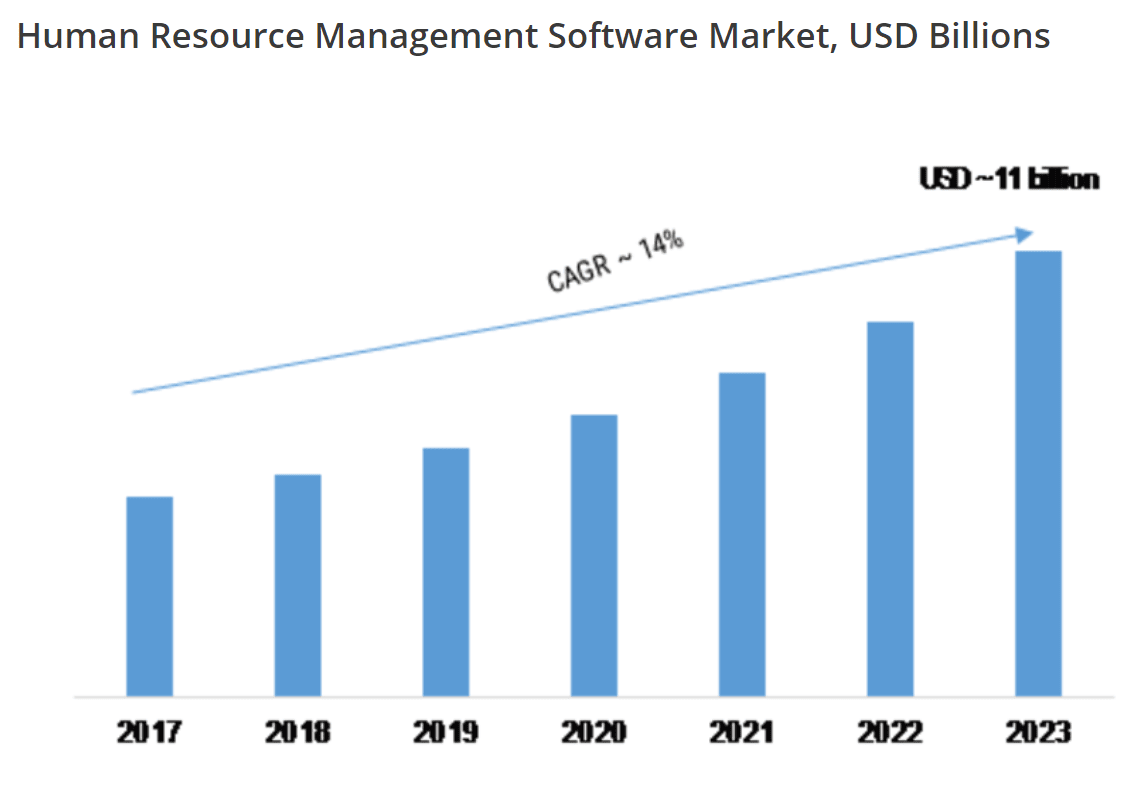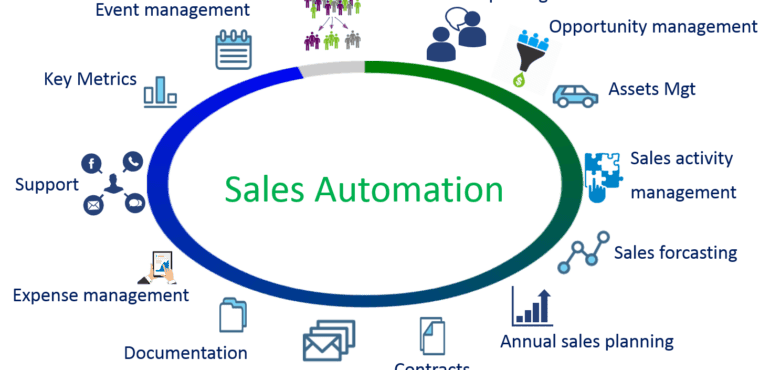6 Things You Should Automate Right Now (So You Can Stop Doing Them Altogether)



Gone are the days when employees would handle every single task within the organization. You must admit, these all-important tasks used to take quite a bit of time to get done.
With each passing day, new technologies are launched capable of handling routine tasks, and in turn, freeing up a lot of time for workers to attend to more important work.
In other words, automation is the real deal for organizations that want to scale up as well as boost their overall productivity. As such, if you’ve not automated the various aspects of your business, you’ve been missing a lot of opportunities for growth and revenue.
So, it is evident that automation has enabled many businesses around the world to get the best out of their workforce and, in turn, greatly improve their customer experience, products, and services.
Before we dig in, let’s first understand what automation is all about.
Automation is the process of replacing manual operations with computer-controlled or technology-driven devices and electronics. For instance, today, businesses use office automation and digital files instead of typewriters and paper appointment books respectively – and numerous other developments.
Here’s a fun fact:
Did you know that (American) businesses reduce payroll costs by about 80 percent thanks to automation? That’s not all! According to Forrester, global marketing automation spending is projected to hit the $25 billion mark by 2023.
Thinking about investing in automation for your business, but you’re worried about the costs it might entail?
We’ve got you covered!
The Integr8 Hub offers 100% FREE automation and integration for SMEs. Check it out!
A lot has changed in the world of Information Technology (IT) over the past four decades or so. IT has gone through mind-boggling transformations that are benefiting businesses and organizations of all sizes.
Functions such as filing, documenting, communication and correspondence have become fully automated. Today, offices look completely different from the way they did during the 1950s.
With automation becoming imperative in the business arena, organizations shouldn’t waste any time as far as its adoption is concerned.
There are various types of automation that organizations can adopt depending on their goals and technological needs.
There are many other types of automation but this is not the place for them. We’ll stick to the ones we know best for now, ok?
Automation offers organizations scalability and agility for handling changes in the market conditions. It makes it easier for businesses to efficiently handle fluctuations in customer orders and be able to meet demand without the need to hire more workers.
For example, with automation, you don’t need to employ and train new workers to perform repetitive tasks such as order processing, inventory, and payment processing when order volume increases. Besides being able to control your costs, automation helps you to ensure that customers get their orders on time.
Among the costs that your business will gain control over is the labor cost. Many companies spend a huge part of their budgets on new hires and the relevant training to handle labor-intensive and time-consuming work, which eats into their profits.
With automation, you can even consider reducing the number of workers required to perform these tasks, and consequently, decrease your overheads and grow your profits substantially.
Another good thing about this is that you can stop focusing on the quantity of the employees and concentrate on the quality of their output. This way you can now hire just the right number of highly talented employees who will concentrate on building your business.
As already mentioned, automation helps organizations to free up resources, including human capital, from recurring tasks. In turn, these resources can be channeled to strategic and innovative efforts instead of manual tasks.
With the discovery of human resources software, the Human Resource (HR) department has access to quality data and analytics for optimizing resource allocation. One incredible way of using HR-inclined technologies is to ensure that team members are handling the right projects at any one given time.
Also, you can use such a system to minimize the chances of over-allocating work to a team member while another doesn’t have much work to do.

Image source: Market Research Future
Being one of the most important software for organizations, spending on the same has gone up since 2017 and there are no signs of slowing down. The market for HRM software is expected to grow to a global value of $11 billion by 2023 at a compound annual growth rate (CAGR) of 14 percent.
By calculating your marketing ROI, you get to understand the degree to which your company’s marketing efforts contribute to the growth of revenue. Organizations use marketing ROI to justify spending on marketing as well as budget allocation for current and future campaigns/initiatives.
So, what makes up a good marketing return on investment?

Image source: Widerfunnel
On the marketing ROI bell curve, the rule of thumb dictates a 5:1 ratio with the exceptional ROI standing at a ratio of 10:1.
If your company is always somewhere below 2:1 ratio, then something isn’t right because this could mean that the costs of producing and distributing products are usually at a point where the company breaks even with its spending and returns.
On the other hand, costs and overhead below 50 percent of the sales prices have chances of experiencing profits on their efforts even with lower ratios. Since every organization is different, it’s imperative to pay attention to unique elements such as costs and margins, as well as standards unique to the industry.
One of the best ways of ensuring high marketing ROI at all times is marketing automation. It goes a long way in helping firms optimize their budgets and enhance results.
You have a wide array of solutions at your disposal including CRM and dales, audience targeting, e-commerce, programmatic ad buying, and email marketing and numerous others. Particularly, automation helps organizations in the processing, analysis, and organization of vast amounts of customer data, and hence, gain the ability to execute personalization strategies that are key to driving sales and improving marketing results in the years ahead.
Are human errors the order of the day in your company? If yes, you need to overcome this annoying and dangerous problem as soon as possible because some mistakes, which are pretty much avoidable, can be costly to your business.

Image Source: Air Fleet
You can enhance accuracy in your numerous business operations through automation. Some of the areas that you can eliminate human errors include order processing, inventory management and even invoicing and payment processing.
Most of the time time, errors occur where employees are required to re-key information on different systems.
By automating these tasks using relevant software you can ensure timely and accurate processing and delivery of orders, speedier and precise management of inventory, invoicing, as well as payment processing.
As a result, your organization will deal with minimal customer complaints which significantly adds to customer satisfaction and loyalty.
Other benefits of automation include:
Automation has now become a must-have in all industries. Many businesses are spending a fortune in automating key functions as well as those that are repetitive and time-consuming at a very high rate.
According to a report by Statista, US businesses spent a little over $7 billion on intelligent process automation in 2018 alone.

Image Source: Statista
There are numerous areas or aspects of your business that you can automate. By automating these things, you and your employees can stop doing them personally altogether and channel your efforts somewhere else.
Let’s consider some of them.
This form of automation is a must-have for all businesses irrespective of size. It is simply a technology that automatically handles marketing processes as well as multifunctional campaigns across many channels.
In its simplest form, marketing automation entails the use of a set of tools aimed at streamlining and simplifying some of the most time-demanding tasks of modern sales and marketing roles.
Marketing automation activities range from lead qualification automation to having in place a hub that supports the creation of digital campaigns and so on.
Whichever marketing task a company chooses to automate the objective should be to simplify it and make it more efficient. It’s that simple!

Image Source: Venture Harbour
B2B and B2C companies reap various benefits from marketing automation. Some of them include:
This one is a biggie. Why?
Well, because that is where your customer spends most of their time. So it makes sense to automate it.

Image Source: BroadbandSearch
Social media is a critical tool for business success in this century. It’s especially useful to organizations that desire to connect with customers, influencers, as well as potential investors.
For such businesses, having a social media strategy and implementing it has become a necessity. The problem lies in its time-consuming nature. Besides updating your profile, you also have to respond to customers, and also create and share content.
Picture a scenario where a company has more than one social media accounts. That means that the management of social media accounts becomes a full-time job.
However, with social media automation, it doesn’t have to get there. Social media automation simply means the optimization of your company’s social interactions via automated tools.
There are various ways of achieving this including the use of social media automation software and applications, syncing your blogs, recycling your evergreen blogs (timeless content), and content curation among numerous others.
Why should you consider social media automation in the first place?
Here are three incredible benefits:
You cannot build a strong social media following without the delivery of consistent content. One of the reasons for lack of consistency is having insufficient manpower for managing your social media.
Thankfully, with social media automation software and apps, you won’t have to worry about such stuff. Social media automation tools help businesses to discover fresh and trending content shareable to their audience. Others allow you to schedule posts that go a long way in keeping all your social accounts active even when you are offline.
Besides helping you post more content social media automation tools help a business gain full control of their social accounts. You gain control over the content you share, posting time, as well as the frequency.
These tools also allow you to keep track of the engagement level your posts are getting, and if it hasn’t reached the desired level, you can adjust your strategy accordingly to attract more Retweets, shares, and likes.
By gaining insights into your viewership – thanks to social media automation tools – you can approach content sharing in a more targeted manner. Lastly, social media automation makes it easy for you to deal with the volume. You can post more content on separate accounts, and more frequently with increased ease.
By the time you’ve automated your social media, you’ll immediately forget about spending too much time on the management of your various social media accounts. Perhaps this is the biggest incentive of social media automation.
Tools help you identify valuable and shareable content capable of adding traffic to your website. A centralized dashboard saves you the agony of logging in on each of your social media accounts to post content and monitor the level of engagement your posts receives.
Be careful though. In as much as automation tools help you to save time, it doesn’t mean that you stop spending time on your social media accounts as that would be counter-productive.
Besides, you only get to automate a few tasks and continue keeping tabs on all your social media accounts to respond to mentions and comments. For your brand to become relatable, you must communicate with your audience.
Email remains the most efficient way for companies to engage their customers. That’s why you shouldn’t be left behind when it comes to email marketing automation. With the right tools, you can easily decide which email to send, to whom, and at what time.
Organizations can take advantage of automated emails to keep their customers engaged. Some of the emails you can automate include welcome emails, birthdays and anniversaries emails, updates about newsletters and blogs, emails notifying customers about upcoming webinars or promotions and those designed to announce product launches and updates.
What are the benefits of email marketing automation?

Image source: Marketing & Growth Hacking
Customer Relationship Management automation entails automating the sales and customer service functions to monitor and handle their engagement efforts with their existing and potential customers.
CRM automation helps your sales team to not only save time but also to nurture leads and attain more conversions by automating tedious and repetitive sales processes.
CRM automation tools help you achieve the following:

Image source: Martech Advisor
The use of CRM applications can help organizations increase their sales by up to 29 percent, increase sales productivity by up to 34 percent and raise the accuracy of sales forecast by 42 percent, according to Salesforce.
Are you always handling different selling woes? A good number of organizations have lost valuable deals for forgetting to follow up.
Others spend precious minutes adding leads or opportunities to their CRM – time that would have been spent on other important company issues. Whatever sales problems you are experiencing; you might just find the solutions for all these woes in sales automation.
Sales automation is the process of mechanizing manual and time-consuming sales activities using software and applications, artificial intelligence and numerous other digital tools. The objective is to handle responsibilities managed by sales representatives and managers daily, weekly or monthly.

Image source: CRM Masters
Some of the benefits of sales automation include:
Automated eCommerce is a notable technology in this digital era. A disruptive force, eCommerce automation makes it possible for entrepreneurs to save time and money, and also sell more. Ultimately, automated eCommerce offers businesses unprecedented opportunities for them to scale exponentially.
eCommerce automation entails the use of multiple software apps and related tools to create a series of processes that overtime minimizes redundancy, eliminates disconnectivity, simplifies flow, and also brings about efficiency and growth.
It gives you a near hands-free operation and in turn allowing business owners and their employees to concentrate on revenue-generating tasks.
Some of the eCommerce activities that your business can automate include finances, project management, customer support, inventory and sales, and marketing (email campaigns, analytics, and social media).
You may also automate the research tasks where you use relevant tools to do homework on your products or services, and other issues, before making important decisions.
To give your business that competitive edge, you should also seriously consider eCommerce integration. This will help you to keep up with the pace of your customers converting on multiple channels at once as well as keep track of your eCommerce products.
You can explore these top integrations for eCommerce software such as Mailchimp for Netsuite or even Volusion to Constant Contact and learn how SyncApps can provide a fully integrated solution for your business.
The market for automation software has enough options that match your business needs including your budget and the nature of your operations.
Of the utmost importance is to familiarize yourself with the automation opportunities available in the market, establish your business’ automation needs, have a plan in place, and once you are ready, implement it.
Note that you can handle business automation gradually. You don’t have to automate every function or task at a go. Prioritize your automation needs and then go for it. Before long, you will begin to reap the amazing benefits of automation.